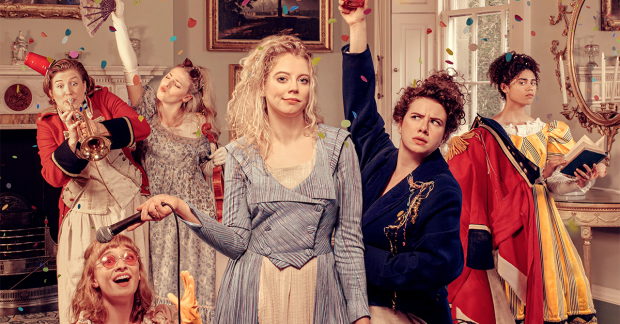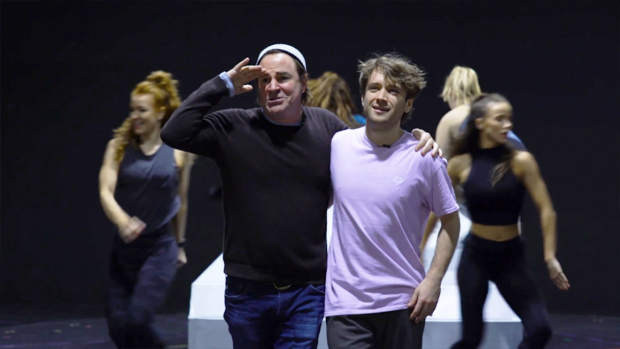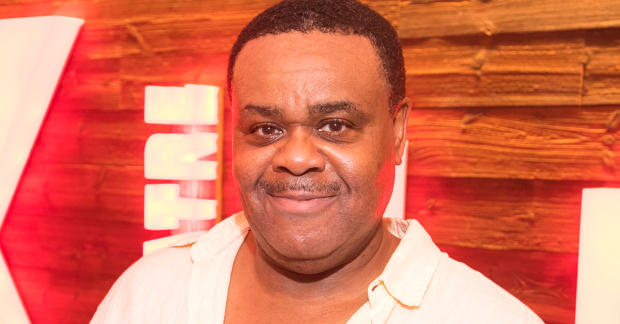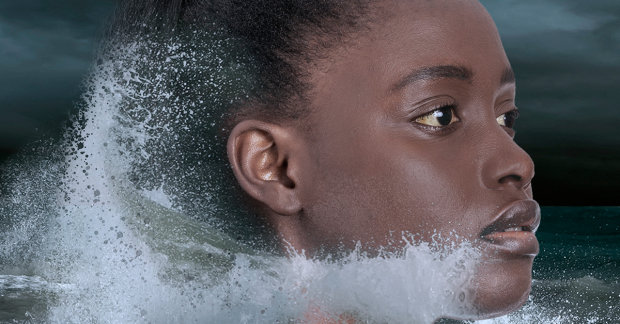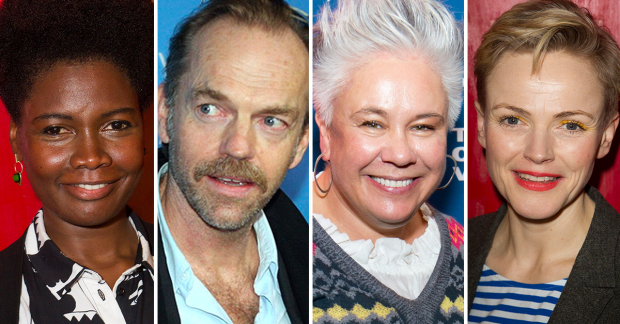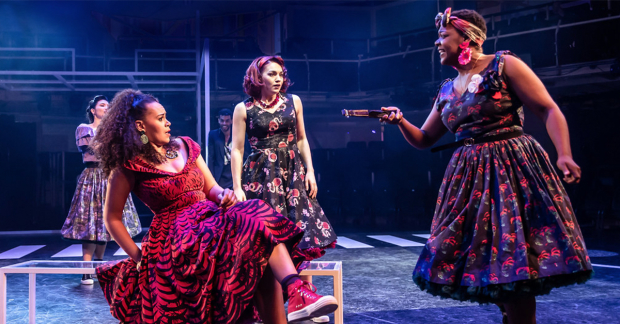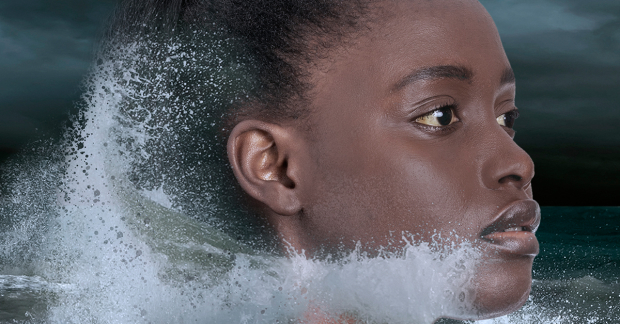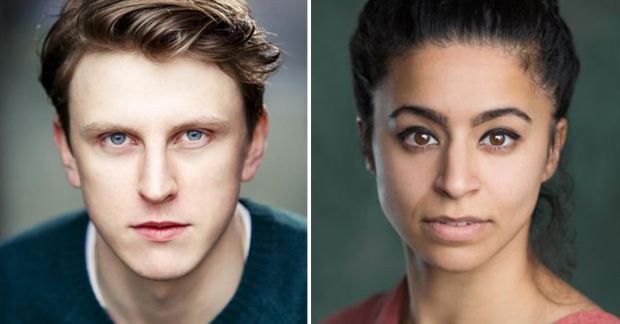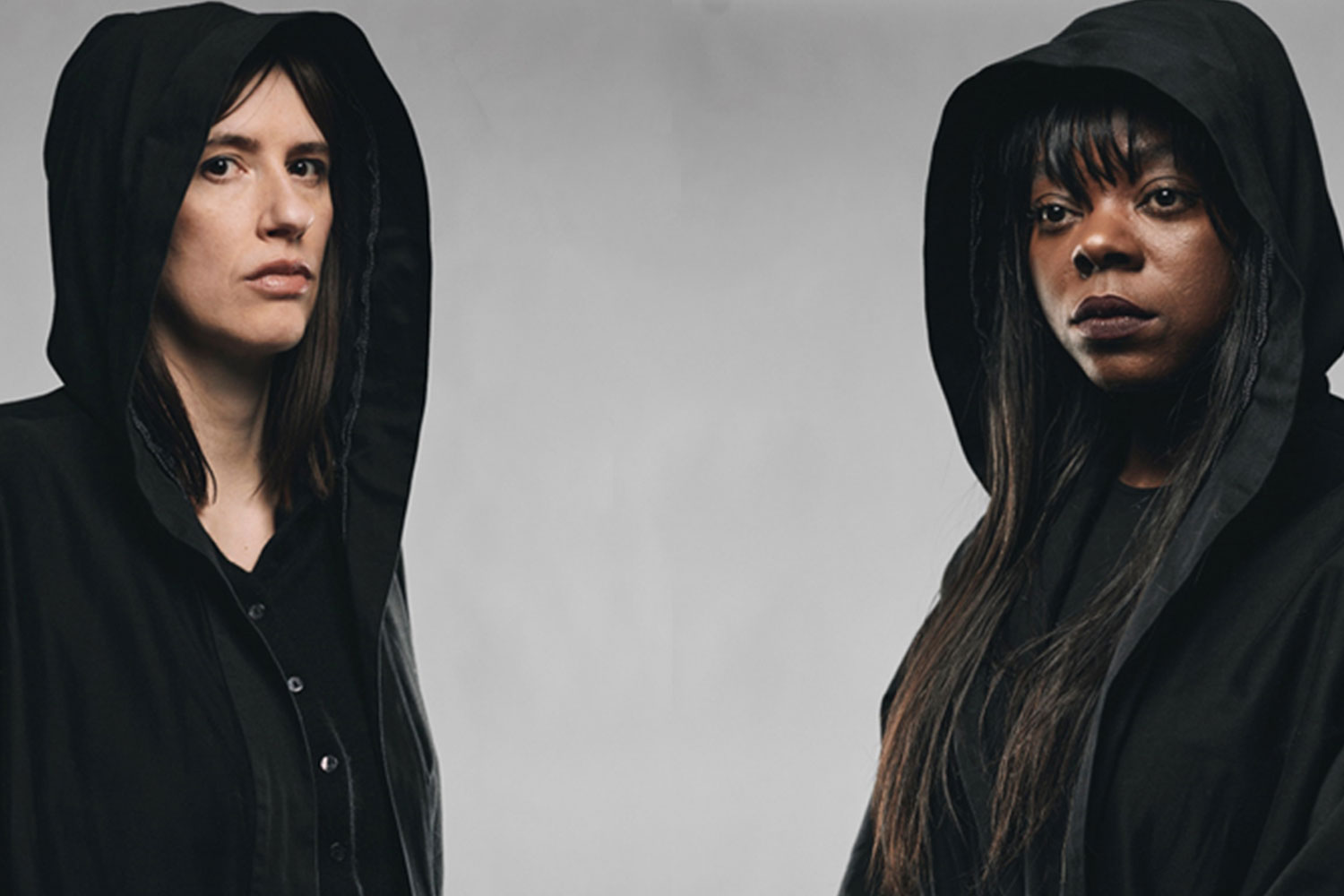Review: Wuthering Heights (Royal Exchange, Manchester)
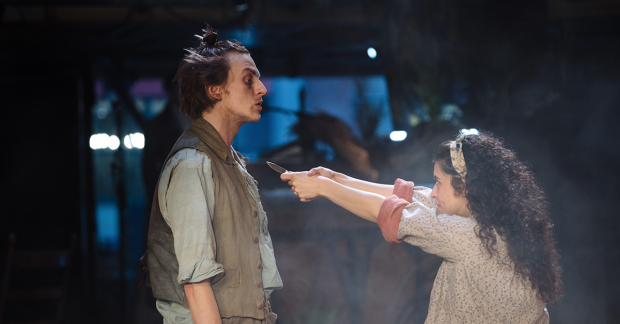
© Helen Murray
The Royal Exchange's incoming co-artistic director Bryony Shanahan has reached back into the literary canon to adapt Emily Brontë's 19th century novel with writer Andrew Sheridan. And as storms Ciara and Dennis rampage across the country, the rural setting of the wild windswept moors seems perfectly appropriate. However, this overblown production doesn't stack up, as the uncontrolled cast lose themselves in the passion of their respective characters.
Streamlining Brontë's plot, the play begins with the adoption of orphan boy Heathcliff into the Earnshaw family who reside at Wuthering Heights. Mr Earnshaw encourages his two children to treat Heathcliff as a brother, but after she overcomes her initial reticence, his daughter Cathy forges an inextricable romantic bond with him which antagonises jealous sibling Hindley. As he becomes increasingly envious of his sister's relationship and his father's favouritism, Hindley resolves to drive the two lovers apart.
The programme characterises Heathcliff and Cathy as "literature's most electric couple", but the chemistry between Alex Austin and Rakhee Sharma lacks any such electrifying charge. After being forced together very early on in the show before romantic development, the audience are expected to believe in the supposed force of attraction based on the two leads simply staring at each other, awkwardly locking gazes while they circle round. The relationship loses any sense of their obsessively infatuated desire, as well as any investment in their united devotion.
Without this central dynamism, the whole production grinds along with the same low energy and attempts to compensate with theatrics that generate mood and emotion. Zoe Spurr's lighting uses hanging LED bars to disperse shards of blinding white across the stage, like forks of lightning pinning down the characters. Paired with the angry rock intensity of Alexandra Faye Braithwaite, Sophia Galpin and Becky Wilkie's live music, the design enriches the primal emotion that drives Heathcliff and Cathy, but at times is in danger of dominating and becoming too wild.
Cécile Trémolières' set fuses the natural and earthly – bark covers a plywood floor, surrounded by scattered weeds – with the ordered angular shaping of raised platforms. This is a world and romance built upon such oppositions – the civilised and the savage are focalised around a contradictory couple who fantasise about there being no universe beyond themselves.
The performances however lack such depth, instead becoming one-dimensional caricatures. Austin quickly dispenses with his interesting animalistic embodiment of Heathcliff's feral instincts in favour of roaring and swaggering around, while Sharma maintains Cathy's stroppy petulance throughout by screeching in a raucous whine, along with Gurjeet Singh's Hindley. The conflict is reduced to a series of childish gestures: defiantly stamping on biscuits and pinching or hurling hairbrushes at each other. Sheridan's script is structured on bursts of quasi-poetic statements approximating Sarah Kane: "A girl. A boy. I am you." The only way the script approaches modernity and differentiates Heathcliff as uncivilised is through torrents of expletives.
Shanahan's direction obsesses over the visual. Rain falls gratuitously at moments, the cast incessantly run around the set as though on a playground and frequently explore each other's bodies with pen knives. Shanahan lingers on every image in the script, such as fox cubs being pulled from their mother's corpse, without guiding all the production's disparate elements. The play frequently references an earth-cracking force, but it's so brash it stirs only a low lull, rather than a height of emotion.



